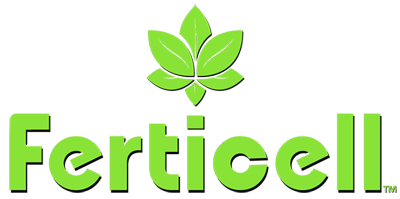Currently, it is well known that applications of protein hydrolysates, whether from animal or plant sources, reduce the negative effects of abiotic stress due to drought, salinity, and heavy metals. But understanding the indirect effects requires a closer look at the microbiome of the soil structure and how it is affected throughout the growing cycle when PHs are applied.
Amino acids are thought to provide an important food and energy source for microbes, as well as a mechanism to help modify various stress responses (Moe, 2013).
As seen above, we know the substrates provided by PH’s provide an excellent food source for plant-associated microbes and help build a microbial oasis of growth, increasing nutrient availability, and uptake.
Several studies have demonstrated that many commercial products obtained from PHs elicited hormone-like activities (auxin and gibberellins), promoting root and shoot growth, and thus crop productivity (Ertani et al., 2009; Matsumiya and Kubo, 2011; Colla et al., 2014; Lucini et al., 2015).
Protein Hydrolysates are made up of carbon and amino acids, ideal sources for plant-associated microorganisms to feed off to stimulate new root hair growth, promote cell elongation in the plant, among other vegetative growth consequences of PH application. It is believed that these microbial communities can affect plant health and crop productivity. (Berendsen et al., 2012; Berg et al., 2016)
Along with microbial benefits, the health benefits and energy consumption savings provided by PHs can allow the plant to properly defend against both plant diseases and pests. These plant defense responses could come directly from foliar/soil treatment or from the thriving microbial communities in the phyllosphere.
Hydrolysates derived from casein and soybeans have previously been demonstrated to elicit grapevine defense mechanisms and suppress downy mildew, caused by Plasmopara viticola (Lachhab et al., 2014)
In the quote above you’ll see the derivation of the PHs as important on its plant function. This can be summarized most simply as each amino acid comprised within each PH will differ based upon its derivation and manufacturing process. Most animal-based hydrolysates, which are the most prominent in the marketplace must go through an acid hydrolysis process. This requires hydrochloric and/or sulphuric acid at very high temperatures of 250°F and pressure of 32 lbs. of force per square inch to hydrolyze the animal protein.
Because of this intense process to formulate animal-derived PHs, many are left with a large number of free amino acids which are converted from L-amino acids to D-amino acids a process called racemization. Throughout this process, a portion of amino acids that essential to the efficiency of PHs, tryptophan, cysteine, and threonine are the most common amino acids that are partially or totally destroyed and lose their beneficial biological activity.
Plant-derived protein hydrolysates like Explorer™ 16-0-0, it’s liquid counterpart, Explorer Liquid™ 10-0-0 and our oldest PH, great for combating abiotic stress, Nutri-Plus™ 2.5-0-0 are all produced through a more refined and gentle method called enzymatic hydrolysis by using proteolytic enzymes at a temperature below 140°F. The finished product naturally contains a higher peptide to free amino acid ratio and a much higher collection of L-amino acids in comparison to the chemical hydrolysis process creating a purer and more efficient end product. (Ex. Explorer™ 16-0-0, 98.6% amino acid profile.)
The Difference between L-Amino Acids & D-Amino Acids
The only two forms of isomeric amino acids that occur in nature are L-Amino acids(L-AA’s) and D-Amino acids (D-AA’s). While some D-amino acids are found in some bacterial cell walls, only L-amino acids are manufactured in cells and incorporated into proteins.
Currently, most of the market for PHs bio stimulants accounts for animal-derived proteins procured through acid hydrolysis, with the remainder coming from enzymatic hydrolysis of plant-derived proteins (Colla et al., 2015a).
While under most circumstances, D-AA’s are not plant beneficial, some parts of the oligopeptides are D-AAs, especially D-alanine and D-glutamate, which protect the cell due to their resistance to cleavage by conventional proteases.
PHs are mainly produced by chemical (acid and alkaline hydrolysis), thermal and enzymatic hydrolysis of a wide range of both animal wastes and plant biomass (Colla et al., 2015a; du Jardin, 2015; Halpern et al., 2015)
In particular, PHs coming from by-products of vegetables and the corn wet-milling industry are gaining popularity among the scientific community and commercial enterprises, since they could represent a sustainable, economical and eco-friendly solution to the problem of waste disposal (Pecha et al., 2012; Baglieri et al., 2014).
Conclusion
What we know about protein hydrolysates and what has been proven via technical study or field application is still carrying its gaps in knowledge. With this relatively new mindset into PHs, it’s refreshing to see the industry taking hold and utilizing the advantages of both plant-derived and animal-derived protein hydrolysates have to offer.
What we can tell, that inherently, applications of plant-derived protein hydrolysates, either through root applications or foliar sprays have extremely beneficial advantages in use-efficiency of other nutrients, new root hair growth, cell elongation, nutrient uptake and assimilation, and the action-release of plant defense mechanisms to combat biotic and abiotic stresses.
While animal-derived PH’s have their place in the marketplace, and as science progresses, we will be able to determine their best-placed applications and use. While without determining the individual amino profile of each product, which will vary based on inputs and methods per batch, it is safe to conclude that under most circumstances, plant-derived protein hydrolysates are a more efficient method of capitalizing on the benefits of amino acids in crop production.
Some things to consider for application methods such as substrate drench applications, PHs will show hormone-like activities leading to the stimulation of seed germination, plant growth, fruit set and support plants in their ability in attaining a full genetic potential for growth and reproduction.
In most cases, pure plant protein hydrolysates like Explorer™ and Nutri-Plus™ can increase yields but improve fruit quality parameters, reduce nitrate accumulation, and relieve plant stress.



